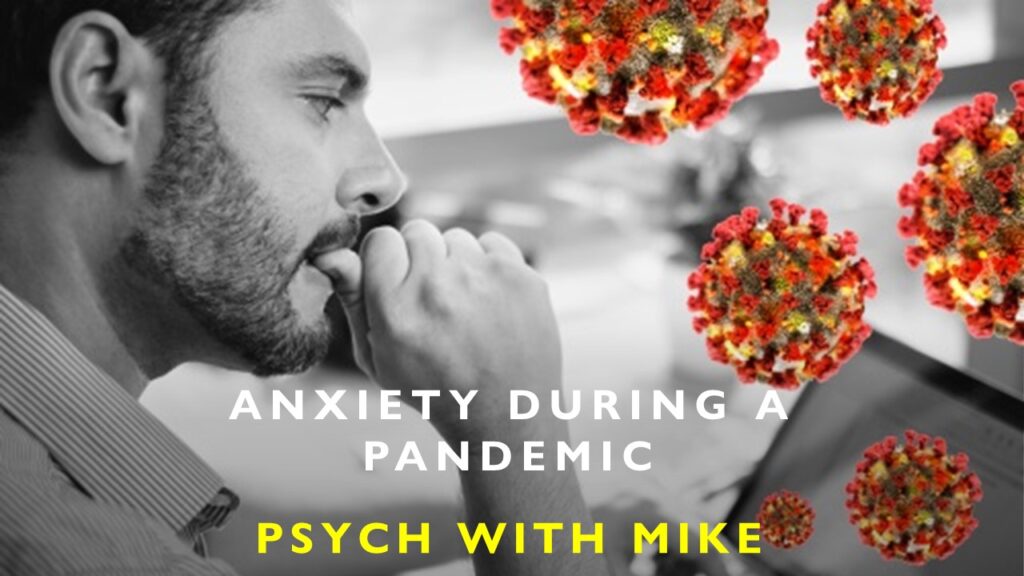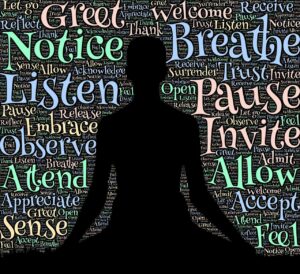Anxiety and depression are the most commonly diagnosed psychological disorders. While that statement in and of itself is not earth-shattering the statement that the overwhelming majority of treating professionals do not understand the difference may very well be. On a recent episode of the Psych with Mike podcast Brett and I discussed the difference between these two disorders so please take a listen to that episode. In this article, however, I want to talk about how an individual can deal with their own anxiety.
Warning Disclaimer: Science Ahead.
As you may already know, here at Psych with Mike we assume that you are interested in a comprehensive understanding of the topics we discuss. That said I am going to provide in-depth information about how your own stress response system works and even scholarly resources for more complete understanding. How much of the science you wish to understand is, of course, a personal choice and I will explain the whole thing so you don’t even need the science at all, but it will be here if you want it.
As you already are familiar with if you have listened to the podcast episode, anxiety in its most common form is a process of rumination (feeding back negative thoughts into your brain on a loop). Feeding negative thoughts into your brain results in cognitive dissonance (the inability for the human brain to hold conflicting thoughts simultaneously). These conflicting thoughts create friction and it is this energy caused by these conflicting thoughts that we experience as anxiety. Often we refer to this process as “stress”. While there are actually differences between the clinical definition of stress and anxiety for the purposes of this discussion we can think of them as the same thing. In the example of the YouTube video that is associated with this article the example of presenting to a group of your superiors in an office and discovering your presentation data is corrupted is used. In this example, the cognitive dissonance is that the individual wants to give a great presentation that will wow the audience but can’t because their presentation has been destroyed. This creates an unresolvable psychological conflict: “I want to give a great presentation” but “My presentation has been corrupted”. Repeated exposure to (chronic) stressful information and/or situations has real biological consequences even though the stress is not the result of a biological process. The stress or cognitive dissonance is created by our thoughts but results in real biologic changes in our bodies. How this process occurs is the key to having control over it and counter-acting it.
Stress triggers what is known as the Hypothalamic-Pituitary-Adrenal axis (HPA). The following YouTube video is a good explanation of how this process works. https://www.youtube.com/watch?v=9FdmxfXrygA
In the video, we see that activation of the hypothalamus triggers the pituitary to stimulate the adrenal gland to increase levels of cortisol in our bodies. The activation of the HPA results in the sympathetic branch of the autonomic nervous system to run the body in overdrive and restrict the parasympathetic branch from calming the body down and returning to homeostasis (balance). In actual crisis and/or life-threatening situations this response helps us have more focus, greater strength, and endurance. Our thoughts trigger the activation of this process in our bodies which is designed to help us to function better. These are all positive effects as long as they are not prolonged or chronic. If the process is prolonged, like a first responder answering the call to a crisis that goes on for an extended period of time, then the body will run out of resources and the liver will become overtaxed. At this point, the individual will collapse in total and utter exhaustion. If the process is chronic then the individuals’ body becomes accustomed to operating with elevated levels of cortisol. When this happens the ability of the parasympathetic nervous system to return the body to homeostasis is impaired and the individual will suffer real physiological damage like chronic fatigue syndrome, ulcers, and fibromyalgia which have all been linked to this process.
Many life events have been linked to chronic stress and anxiety from childhood memories to experiences in combat. While it may be easy to imagine how severe events contribute to negative consequences, what is harder is to see how everyday life contributes to our accumulation of chronic stress. Think about your life, how often do you feel ‘stressed out”? The reason we get to that point is that the accumulation of everyday stress in our lives has become chronic. What is even more disturbing is that research shows that when the HPA system is activated our brains release chemicals called endorphins. Endorphins are the naturally occurring substances in our brains that create opioid-like effects. This makes a lot of evolutionary sense in that these chemicals when released during the activation of the HPA system significantly increase our sense of well-being and reduces our perception of pain. This also helps to allow the individual to act at a high level for a longer time. The insidious part of this, however, is that it may actually be possible to explain an individuals’ “addiction” to stress and anxiety in biological terms. If a person experiences a pleasurable effect associated with feeling stress and anxiety based on getting a shot of endorphin, then the individual could want to reproduce this experience over and over again. The following article details how this process works and how it could play a major role in addiction to alcohol. This is a very technical article so everyone may not want to read it in its entirety but the idea is important to all of us. The more we ruminate and experience anxiety and stress, the more we get these little shots of endorphins. This can then become a powerfully rewarding experience. Over time, however, the shot of endorphin is not enough to compensate for the parasympathetic nervous system’s inability to return our bodies to homeostasis and the net result is we feel “bad” all the time but can’t break the habit of engaging in creating our own stress.
We all know people who appear to revel in creating their own stress. Adolescents do this but so do adults. Have you ever heard the term “first world problem”? This is the very definition of self-created stress and anxiety. By definition, these are not a crisis or even significant issues. None the less we often find ourselves ruminating on these issues and can’t find the ability to let them go. Can a person take control of their own stress and anxiety and significantly reduce it? The answer is a resounding yes! As with so many things, however, these techniques will only be as good as the individual is at taking personal responsibility and being consistent. The individual has to be willing to accept that anxiety and stress and mostly self-created and be willing to take responsibility for counteracting it. Additionally, if the individual uses these techniques sometimes, they might get some value from the experience but for the most “bang for the buck” these techniques should be employed with as much consistency as possible.
Technique number one is accepting one of the conflicting options and being willing to live with the consequences. In the first example of the person with the corrupted presentation file, why is there any conflict? Nothing can be done to repair the file and yet the only reason the individual feels stress is because of their inability to accept this reality. If he or she embraced a side (in this case the only side is to accept the file is corrupted) and accepted the consequences (went to the meeting and informed his/her superiors) then there would be no conflict. As humans, it is often difficult for us to pick a side. We want to keep as many of our options open (at least perceptually) for as long as possible. Think about asking someone you like out on a date. The fear of rejection often gets in the way of the actual asking. So we sit in anticipation of asking and living with the anxiety because that seems easier. But is it really? Biologically it obviously isn’t and psychologically it isn’t either. Asking and accepting the yes or no would always be easier and better but is perceived as so much harder. This is the epitome of Schrodinger’s cat, we want to keep all options open for as long as possible so that we can fantasize that the other person might say yes rather than live with the rejection of no. This scenario, however, precludes the possibility that they might say yes, but we will never get to experience the joy of that if we never ask. Pick a side and live with the consequences and in the end, the benefit of reducing your own anxiety will far outweigh any negative!
Technique number two is learning to control one’s breathing. Have you ever seen in a movie or cartoon someone hyperventilating? What do those around the person do? Give them a paper bag to breathe into, right? Why does this work, because hyperventilation is all about shallow breathing that causes the body to go into a state of overdrive. Shallow breathing causes the body to be overly rich in oxygen which activates the sympathetic nervous system and puts the body in overdrive. Deep breathing techniques, especially those where you practice exhaling for twice as long as you inhale will build up carbon dioxide and activate your parasympathetic nervous system. A great way to learn this technique is to watch some videos on proper breathing to free dive. The following is a short example but many more are available.
The more you can identify when you are anxious and utilize breath work to restore the system to homeostasis the more your body will become conditioned to being calm.
I hope someone finds this information helpful and useful.



